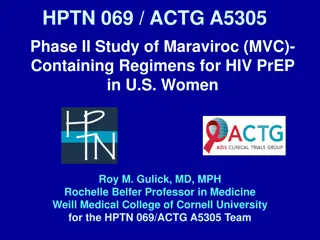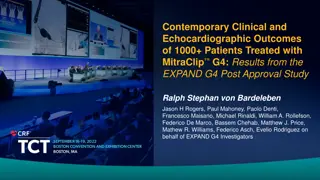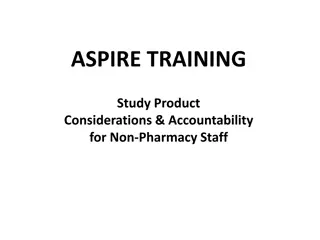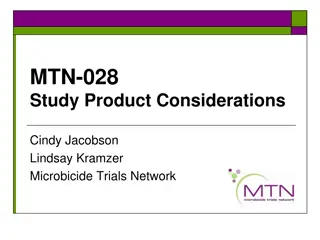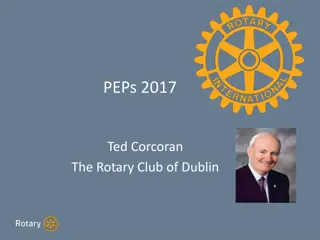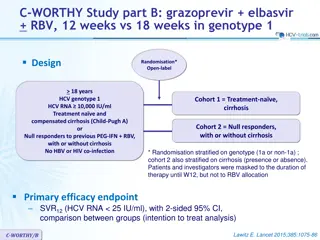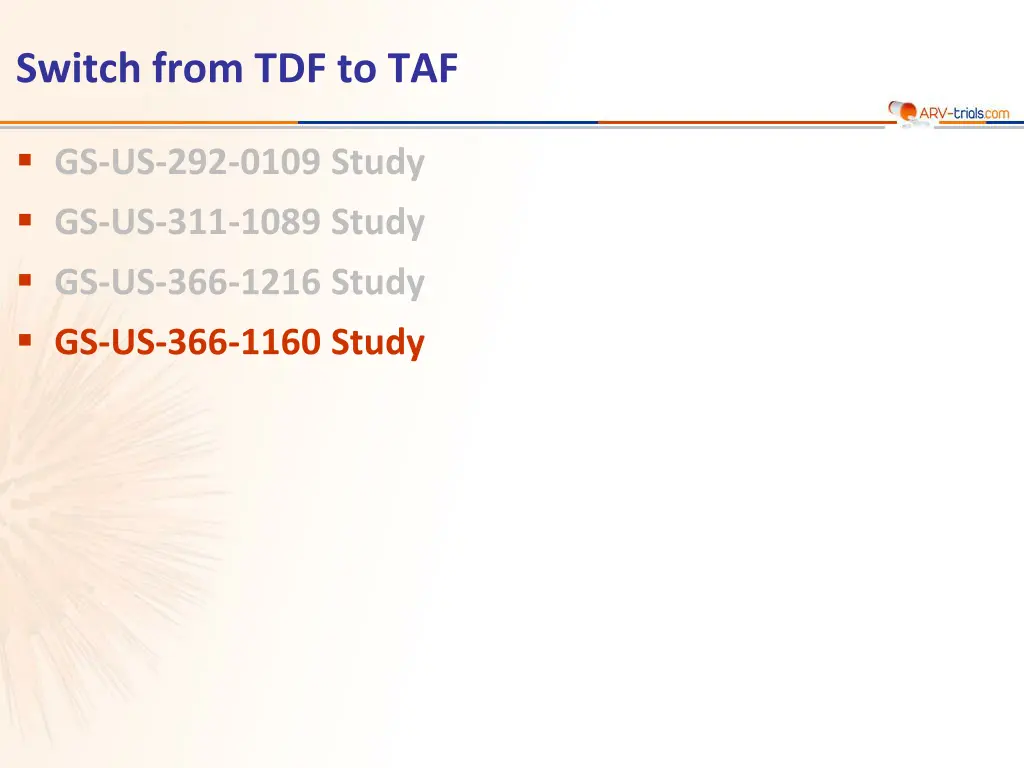
Switch from TDF to TAF in HIV Study GS-US-366-1160
Explore the results of switching from EFV/FTC/TDF to RPV/FTC/TAF in the GS-US-366-1160 study. The study focuses on virologic outcomes, resistance analysis, patient characteristics, and efficacy results at week 48. Discover the impact on HIV RNA levels, bone mineral density, and more in this detailed investigation.
Download Presentation

Please find below an Image/Link to download the presentation.
The content on the website is provided AS IS for your information and personal use only. It may not be sold, licensed, or shared on other websites without obtaining consent from the author. If you encounter any issues during the download, it is possible that the publisher has removed the file from their server.
You are allowed to download the files provided on this website for personal or commercial use, subject to the condition that they are used lawfully. All files are the property of their respective owners.
The content on the website is provided AS IS for your information and personal use only. It may not be sold, licensed, or shared on other websites without obtaining consent from the author.
E N D
Presentation Transcript
Switch from TDF to TAF GS-US-292-0109 Study GS-US-311-1089 Study GS-US-366-1216 Study GS-US-366-1160 Study
GS-US-366-1160 Study: Switch EFV/FTC/TDF to RPV/FTC/TAF Design Randomisation 1 : 1 Double blind W48 W96 HIV+ 18 years On EFV/FTC/TDF > 6 months HIV RNA < 50 c/mL 6 months eGFR (Cockroft-Gault) > 50 mL/min No resistance to EFV, RPV, FTC or TDF RPV/FTC/TAF 25/200/25 mg QD * + EFV/FTC/TDF placebo N = 438 EFV/FTC/TDF 600/200/300 mg QD ** + RPV/FTC/TAF placebo N = 437 * With food, AM ** Without food, PM Endpoints Primary: proportion of patients maintaining HIV RNA < 50 c/mL at W48 (ITT, snapshot) ; non-inferiority if lower margin of a two-sided 95.001% CI for the difference = - 8%, 95% power Secondary: percentage change for hip and spine bone mineral density between treatment groups ; 95% power to detect a 1.38% difference (non-inferiority margin) ; multiple adjustments to test for superiority De Jesus E. Lancet HIV 2017; 4:e205-13 GS-US-366-1160
GS-US-366-1160 Study: Switch EFV/FTC/TDF to RPV/FTC/TAF Baseline characteristics and patient disposition RPV/FTC/TAF N = 438 49 15 66 / 27 / 7 673 98 110.4 6 / < 1 43 (9.8%) 11 3 1 0 2 17 5 4 EFV/FTC/TDF N = 437 48 11 67 / 28 / 5 666 99 107.6 8 / < 1 35 (8.0%) 8 0 0 1 3 15 6 2 Median age, years Female, % Race: white / black / other, % CD4/mm3, median HIV RNA < 50 c/mL, % eGR (Cockroft-Gault), mL/min, median Proteinuria: grade 1 / grade 2, % Discontinuation by W48, N (%) Adverse event Lack of efficacy Death Pregnancy Investigator decision Consent withdrawal Lost to follow-up Protocol violation De Jesus E. Lancet HIV 2017; 4:e205-13 GS-US-366-1160
GS-US-366-1160 Study: Switch EFV/FTC/TDF to RPV/FTC/TAF Virologic outcome at W48 (ITT, snapshot) Other efficacy results at W48 Per protocol analysis (HIV RNA < 50 c/mL) 99.1% RPV/FTC/TAF 99.3% EFV/FTC/TDF RPV/FTC/TAF EFV/FTC/TDF % 100 92.0 90.0 80 Virologic success was similar between treatment groups for the subgroups of age, sex, race, and geographic region 60 40 Virologic success lower in RPV/FTC/TAF group if adherence 95%: 91% vs 95% for EFV/FTC/TDF 20 8.9 7.1 438 437 1.1 0.9 0 Success Virologic failure No virologic data HIV RNA< 50 c/mL Mean changes in CD4/mm3 + 23 RPV/FTC/TAF + 12 EFV/FTC/TDF Difference (95% CI) = - 2.0% (- 5.9 to 1.8) De Jesus E. Lancet HIV 2017; 4:e205-13 GS-US-366-1160
GS-US-366-1160 Study: Switch EFV/FTC/TDF to RPV/FTC/TAF Resistance analysis Genotype and Phenotype testing if confirmed HIV RNA 50 c/mL and confirmatory sample 400 c/mL, or HIV RNA 400 c/mL at W48 or at the last visit on study drug 6 patients in the RPV/FTC/TAF group: no emergent resistance mutations ; 4 were re-suppressed without changing therapy 2 patients in the EFV/FTC/TDF group: emergence of resistance to FTC (M184V) and RPV (V106I/L + Y188L) Historical genotypes : resistance mutations to study drug in 3 participants 2 patients in the RPV/FTC/TAF group (K103N ; E138A) 1 patient in the EFV/FTC/TDF group (K103N) All 3 discontinued at W36 or W48 with HIV RNA < 50 c/mL De Jesus E. Lancet HIV 2017; 4:e205-13 GS-US-366-1160
GS-US-366-1160 Study: Switch EFV/FTC/TDF to RPV/FTC/TAF Adverse events, % RPV/FTC/TAF, n = 438 EFV/FTC/TDF, n = 437 Adverse events related to study drug 13 10 Serious adverse event related to study drug 6 0 6 < 1 Adverse event leading to discontinuation 3 * 2 ** Most common adverse events ( 5% of patients) Upper respiratory tract infection Nasopharyngitis Cough Headache Diarrhea Arthralgia 10 8 6 6 5 5 10 4 3 4 7 5 * Anaemia (N = 1), diarrhea (N = 1), vomiting (N = 1), constipation (N = 1), fatigue (N = 2), ulcer haemorrhage (N = 1), localised infection (N = 1), multiple fractures (N = 1), road traffic accident (N = 1), dysgeusia (N = 1), headache (N = 1), somnolence (N = 1), anxiety (N = 1), cough (N = 1), decreased GFR (N = 1), generalised pruritus (N = 1) ** Atrial fibrillation (N = 1), diarrhea (N = 1), vomiting (N = 1), abdominal distension (N = 1), abdominal pain (N = 1), constipation (N = 1), dysphagia (N = 1), gastro-oesophageal reflux (N = 1), nausea (N = 1), hypersensitivity (N = 1), sinusitis (N = 1), arthralgia (N = 1), confusional state (N = 1), insomnia (N = 1), asthma (N = 1), rash (N = 1) 1 patient died from methamphetamine and cocaine overdose in the RPV/FTC/TAF group De Jesus E. Lancet HIV 2017; 4:e205-13 GS-US-366-1160
GS-US-366-1160 Study: Switch EFV/FTC/TDF to RPV/FTC/TAF Change in renal biomarkers at W48 Urine protein to creatinine ratio (% median change) 2MG/Cr P/Cr * Alb/Cr * RBP/Cr * 30 * RPV/FTC/TAF EFV/FTC/TDF 29.1 17.1 20 12.2 10 0 -2.0 -10 - 13.5 -20 - 27.6 -30 - 30.0 * p < 0.001 -40 - 41.0 Cr: creatininuria -50 Median change in eGFR: - 4.1 mg/dL on RPV/FTC/TAF vs 0.6 mg/dL on EFV/FTC/TDF (p < 0.0001) 1 patient discontinued for study-drug renal adverse event in RPV/FTC/TAF group (decrease in eGFR from 54.2 to 26.4 mL/min) No reported cases of proximal renal tubulopathy or Fanconi syndrome in either group De Jesus E. Lancet HIV 2017; 4:e205-13 GS-US-366-1160
GS-US-366-1160 Study: Switch EFV/FTC/TDF to RPV/FTC/TAF Mean % change in bone mineral density through W48 (%, 95% CI) Hip Lumbar spine 4 1.65 1,28 2 p < 0.0001 p < 0.0001 0 - 0.05 - 0.13 RPV/FTC/TAF EFV/FTC/TDF -2 -4 Baseline W24 W48 Baseline W24 W48 Number assessed RPV/FTC/TAF EFV/FTC/TDF 388 399 Improvement of osteopenia or osteoporosis at W48 369 382 347 367 394 400 373 382 351 369 N = 15 N = 27 RPV/FTC/TAF p = 0.0037 N = 9 N = 6 EFV/FTC/TDF De Jesus E. Lancet HIV 2017; 4:e205-13 GS-US-366-1160
GS-US-366-1160 Study: Switch EFV/FTC/TDF to RPV/FTC/TAF Fasting lipids changes at W48 Decreases in total cholesterol, direct LDL, HDL and triglycerides in the RPV/FTC/TAF group Stable in the EFV/FTC/TDF group Change in total cholesterol:HDL-cholesterol ratio was similar in both groups Introduction of lipid-lowering agent between baseline and W48: 4% in both groups De Jesus E. Lancet HIV 2017; 4:e205-13 GS-US-366-1160
GS-US-366-1160 Study: Switch EFV/FTC/TDF to RPV/FTC/TAF Conclusion Overall, virally suppressed, HIV-infected individuals who switched to rilpivirine, emtricitabine, and tenofovir alafenamide maintained viral suppression at 48 weeks similarly to those who remained on efavirenz, emtricitabine, and tenofovir disoproxil fumarate The rilpivirine, emtricitabine, and tenofovir alafenamide single-tablet regimen was well tolerated and associated with significant improvements in measures of bone and renal safety De Jesus E. Lancet HIV 2017; 4:e205-13 GS-US-366-1160







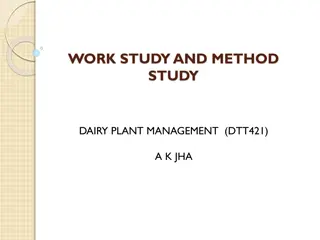
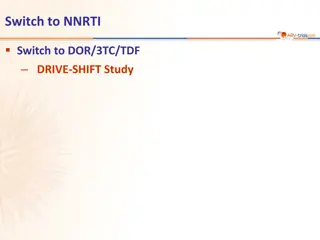
![[Insert Study Name] Study Webinar: Engaging Participants for Research Progress](/thumb/168084/insert-study-name-study-webinar-engaging-participants-for-research-progress.jpg)

